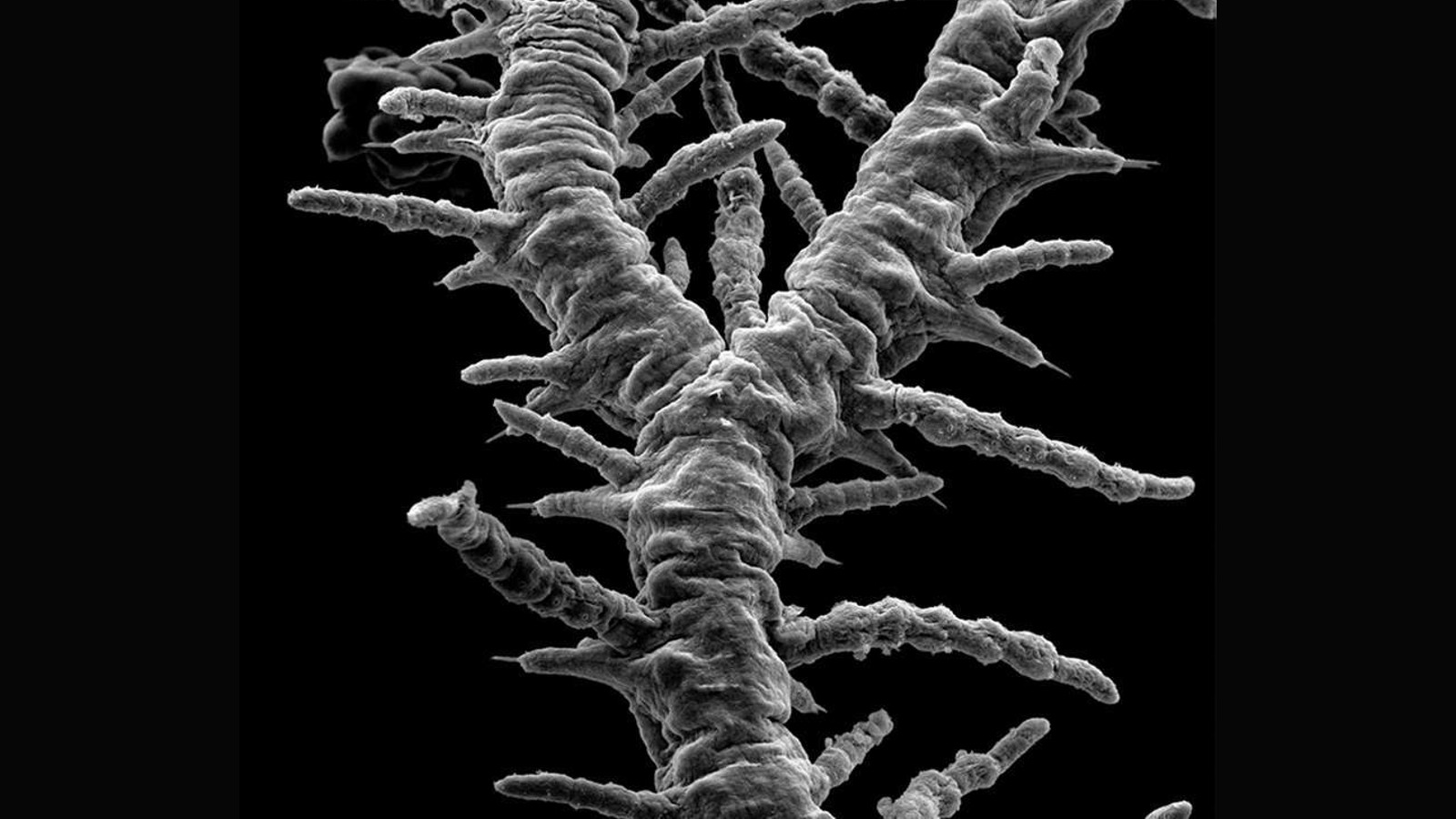Bizarre sea worm with regenerative butts named after Godzilla's monstrous nemesis
The unusual invertebrate spends most of its life living inside a sponge.
A newfound species of branched sea worm sports dozens of regenerative rear ends that detach and swim off during reproduction. This weirdo superpower led the beastie's discoverers to name it after Godzilla's monstrous multiheaded nemesis, King Ghidorah.
In total, 25 of the new worms, named Ramisyllis kingghidorahi after the villainous kaiju, were found living inside a sea sponges in Japan in October 2019. Unlike their namesake, who has three heads and two tails, R. kingghidorahi have only one head but do have multiple posterior branches, which grow to fill out narrow tubes inside their host sponges, which were between 2 and 4 inches (5 and 10 centimeters) long.
When the worms reproduce, the end of each branch, known as a stolon, detaches and swims to the surface to release its eggs or sperm, which then get mixed in the water column, where fertilization happens. The stolons die, but the worms remains safely in their spongy hosts and regenerate the lost sections of each branch for the next reproductive cycle.
Related: The 12 weirdest animal discoveries
"King Ghidorah is a branching fictional animal that can regenerate its lost ends. So we thought this was an appropriate name for the new species of branching worm," lead author Maria Teresa Aguado, an evolutionary biologist specializing in marine invertebrates at the University of Göttingen in Germany, said in a statement.
R. kingghidorahi is the third species of branching sea worm ever discovered. The first species, now called Syllis ramosa, was found in 1879 in the Philippines. The second, Ramisyllis multicaudata (from the same genus as R. kingghidorahi), was uncovered in 2006 in northern Australia and was named in 2012. A study released in May 2021 revealed that R. multicaudata can have around 100 branching segments, Live Science previously reported.
The various species also choose different sponges as homes: S. ramosa lives inside deep-sea glass sponges, while the two Ramisyllis sponges prefer shallow-water stone sponges. There are likely more branched sea worms waiting to be discovered, according to the researchers. However, it is challenging to find the elusive invertebrates because they spend a majority of their lives concealed within their spongy hosts.
Get the world’s most fascinating discoveries delivered straight to your inbox.
"We were amazed to find another one of these bizarre creatures," Aguado said in the statement. The genetic differences between R. kingghidorahi and R. multicaudata, which descended from the same common ancestor, also highlight that there is much more diversity among branched sea worms than expected, she added.
The researchers now want to explore the unique, mysterious relationship between the worms and their sponge hosts.
"We don't yet understand exactly what the relationship between the worm and its host sponge is," Aguado said in the statement. It could be symbiotic, which means it is mutually beneficial to the worm and the sponge, or parasitic, in which the worm benefits at the expense of its host sponge.
The researchers are also unsure how the worms manage to access enough food inside the sponges to continue growing new branches and regenerating lost ones — processes thought to be very energetically expensive, according to the statement.
The study was published online Jan. 19 in the journal Organisms Diversity & Evolution.
Originally published on Live Science.

Harry is a U.K.-based senior staff writer at Live Science. He studied marine biology at the University of Exeter before training to become a journalist. He covers a wide range of topics including space exploration, planetary science, space weather, climate change, animal behavior and paleontology. His recent work on the solar maximum won "best space submission" at the 2024 Aerospace Media Awards and was shortlisted in the "top scoop" category at the NCTJ Awards for Excellence in 2023. He also writes Live Science's weekly Earth from space series.





